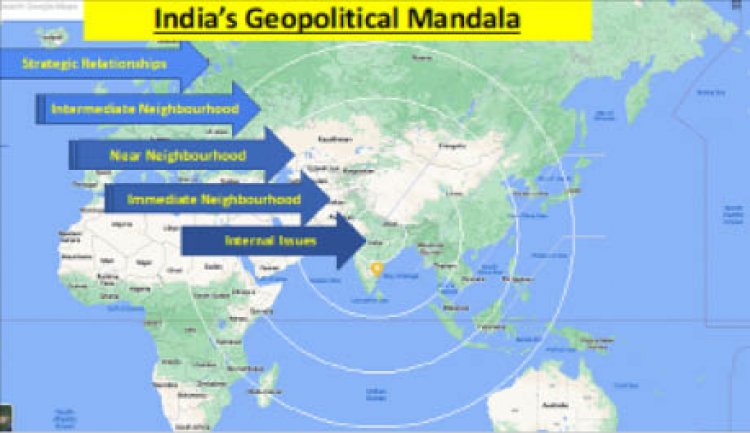Geopolitical Factors Present Opportunity for India
STORIES, ANALYSES, EXPERT VIEWS

Over the past few months, multilateral institutions and global investment agencies have revised their growth estimates for India in the light of the latest economic data. The International Monetary Fund recently revised growth estimates for 2024-25 from 6.2 to 6.5 per cent. The United Nations has gone a step further and projected growth in 2024 to reach 6.9 per cent from the earlier estimate of 6.2 per cent. The driver of this higher growth is expected to be strong public investment and resilient private consumption.
Fitch Ratings, Moody’s and Goldman Sachs have made similar upward revisions and their expectations now range between 6.6 and 7 per cent for the current financial year.
Reasons for high growth
The catalyst for these changes, writes Sushma Ramachandran (Senior Financial Journalist) “is the fact that most economic indicators are showing an upswing. Overall GDP growth in the third quarter of 2023-24 has touched a robust 8.4 per cent, following over 8 per cent growth in the earlier quarters. Similarly, the index of industrial production has risen by 5.8 per cent during 2023-24 compared to 5.2 per cent in the previous fiscal. The core sector industries have recorded 7.5 per cent growth over this period, while GST collections reached a record high of Rs 2.1 lakh crore in April this year.
Inflation under control: Inflation is also “largely under control, though food prices continue to remain an area of concern. During April, retail inflation touched an 11-month low at 4.83 per cent, but food inflation has remained at the double-digit levels. The mid-year update of the UN’s World Economic Situation and Prospects 2024 expects inflation to decelerate from 5.6 per cent in 2023 to 4.5 per cent in 2024, thus staying within the ambit of the central bank’s range of 2 to 6 per cent.”
US-China friction benefits India
It is in this backdrop that developed economies like the US are finding investment in this country increasingly attractive. The US-China friction as well as the recognition during the pandemic that concentrating investments in a single location can be counter-productive has “spawned the China Plus One policy. India is being viewed as a ‘friendly’ developing country and multinationals are thus looking at it through a fresh lens…..”
Some Western economists are describing the strategic shifts in the US-China relations as a decoupling that has now reached an inflection point. But, writes Ramachandran “bureaucratic red tape (and regulatory complexities) continues to bedevil foreign investors. In contrast, countries like Vietnam and Indonesia have easier investment terms and many companies are preferring to shift there.” The growing protectionism “that had accompanied the Make in India initiative has also been a worry for investors. Average import tariffs have been gradually rising over the past few years….”
FTAs, a positive sign: The positive is the “drive to enter into FTAs also indicates greater flexibility in the approach towards market access. This has enabled the conclusion of FTAs with the UAE, Australia and Mauritius. The latest trade pact entered into with the European Free Trade Association has even taken an innovative approach involving a commitment of $100 billion of investments from the group. Similarly, FTAs with the European Union, the UK and Oman are currently under negotiation.”
FDI should be a priority: The urgency of creating a conducive investment climate has grown as foreign direct investment (FDI) flows have dwindled in the past two years. FDI therefore, also has to be a priority. According to Ramachandran “a window of opportunity exists right now in the arena of foreign investments due to shifts in geoeconomic ties….”















